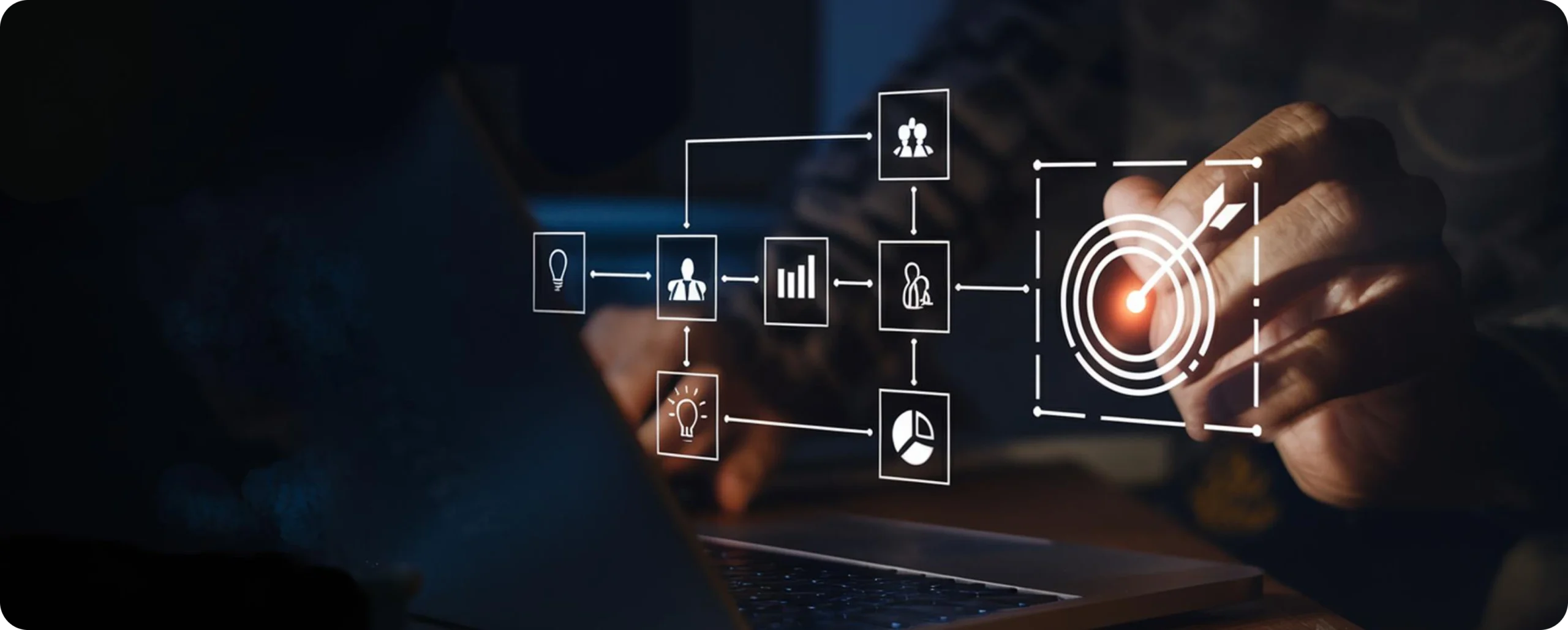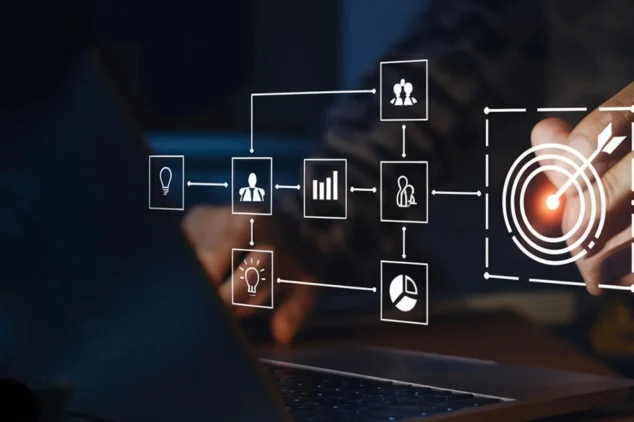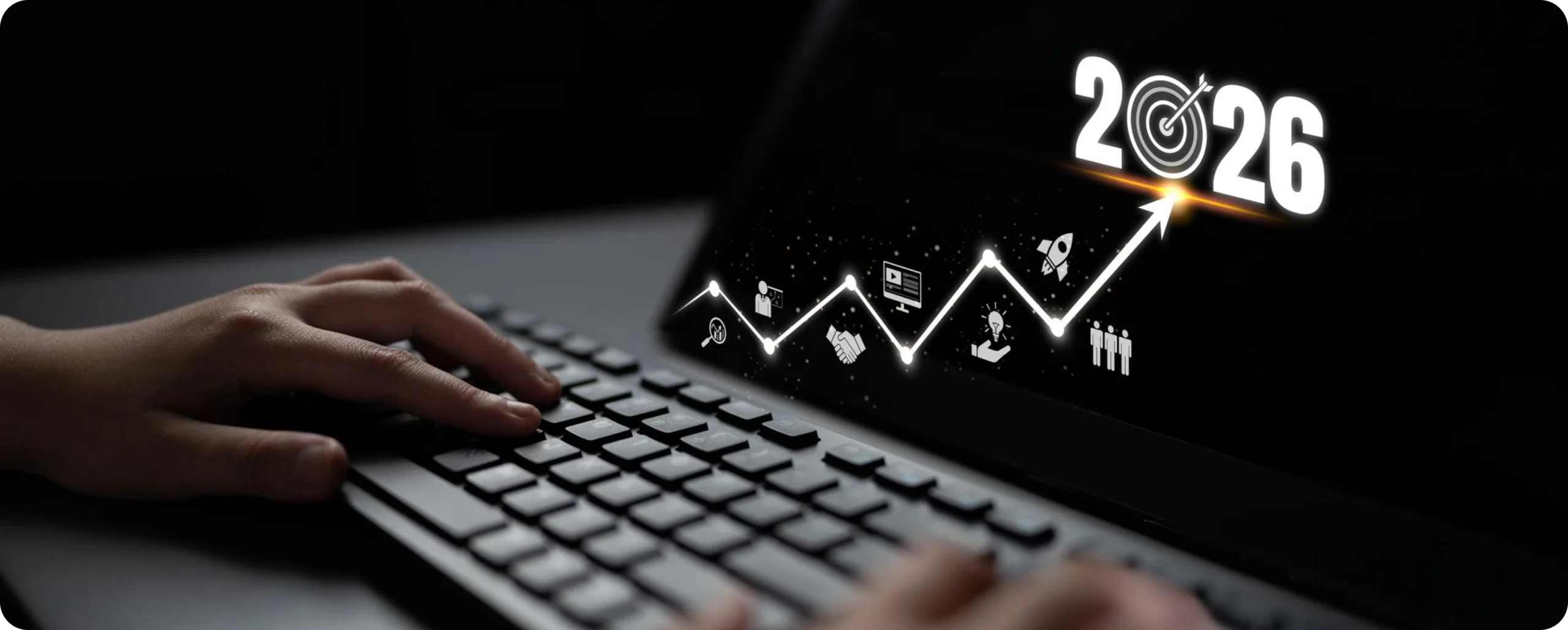Key Takeaways
- The B2B customer journey is nonlinear, multi-stakeholder, and increasingly digital-first.
- Mapping each stage, from awareness to advocacy, reveals opportunities to align sales, marketing, and success teams
- Omnichannel success depends on continuity: buyers expect consistent experiences across every touchpoint.
- Integrating data, messaging, and timing drives engagement, trust, and conversion.
- LevelUp Leads helps B2B teams design omnichannel outreach that meets buyers where they are and moves them closer to conversion.
If your sales and marketing teams feel like they’re speaking different languages, your customer journey probably isn’t mapped.LevelUp Leads helps B2B teams design omnichannel outreach that meets buyers where they are and moves them closer to conversion.
In today’s B2B landscape, buyers don’t move in a straight line from discovery to demo. They bounce between email, LinkedIn, ads, peer reviews, and even Slack communities before ever booking a meeting. Each channel offers another chance to win or lose their trust.
Mapping your B2B customer journey helps you see that path clearly. It reveals where buyers stall, what content moves them forward, and how your message can stay consistent across every interaction. And when you combine that clarity with an omnichannel strategy, you create experiences that feel seamless, not scattered.
What is the B2B Customer Journey?
The B2B customer journey is the complete experience a buyer has with your brand, from first impression to loyal advocate. It’s not a funnel; it’s a network of touchpoints, decisions, and conversations that unfold over weeks or months.
Unlike B2C, where a single consumer makes a purchase, B2B journeys involve 6 to 10 stakeholders on average. Each plays a different role (researcher, influencer, budget owner, end user) and each interacts with your brand in their own way.
A B2B customer journey map visualizes this complexity. It outlines:
- What each persona is thinking, feeling, and doing at every stage.
- Which channels or content they use to find answers.
- Where handoffs between teams (marketing, SDR, sales, customer success) often break.
When done right, a B2B customer journey map becomes a go-to playbook, not just for understanding your buyers, but for orchestrating a connected experience across the entire revenue team.
The 5 Stages of the Omnichannel B2B Journey
How do leading organizations create successful B2B customer journey maps? They align their efforts with the five stages of the customer journey.
1. Awareness: Problem Recognition
Buyers realize they have a challenge. They’re searching, scrolling, and learning, but not ready for a pitch.
Your goal: Educate, don’t sell. Use top-funnel content, paid ads, and social engagement to introduce solutions and establish credibility.
2. Consideration: Research & Comparison
Now, the buyer is evaluating potential solutions.
Your goal: Be present everywhere they’re looking. Email nurture sequences, retargeting, case studies, and outbound calls should tell a consistent story.
3. Decision: Evaluation & Buy-In
This is where deals win or die. Stakeholders weigh ROI, technical fit, and risk.
Your goal: Simplify complexity. Share proof (case studies, testimonials), answer objections quickly, and make the decision feel safe.
4. Onboarding: First Value
Once the deal closes, the journey’s just starting.
Your goal: Deliver value fast. Align sales and customer success so clients see immediate ROI and confidence in their choice.
5. Advocacy: Loyalty & Expansion
Satisfied customers become your best marketers.
Your goal: Create experiences worth sharing. Gather feedback, celebrate wins, and invite them to share their stories.
Each stage connects to the next.
Omnichannel success means that when your buyer moves from a webpage to an email to a LinkedIn post they experience the same message, tone, and branding.
Why Omnichannel Consistency Matters
“Multichannel”means your message is everywhere. “Omnichannel” means all of your messaging works together.
In practice, that means:
- A prospect who clicked your ad gets a follow-up email with context.
- SDRs know what content their leads have already seen.
Messaging evolves across channels.
According to Salesforce, 74% of buyers use multiple channels to complete transactions with 76% expecting consistent cross-channel interactions. That’s because modern buyers expect every brand, B2C and B2B, to recognize their history and anticipate their next step.
When you align your message across platforms, your brand feels intelligent, responsive, and human. That’s what wins attention in a noisy inbox or crowded feed.
How to Create a B2B Customer Journey Map
Journey mapping isn’t about making it pretty, it’s about making it useful. Here’s how you can create a practical and actionable B2B customer journey map.
Step 1: Identify Your Stakeholders
Create clear personas for each role involved in buying (economic buyer, technical lead, end user, etc.) and document their goals and pain points. Sales calls and closed-lost notes are goldmines for insights here.
Step 2: Document Key Touchpoints
Map where each persona interacts with your brand. Common touchpoints include:
- Ads and content downloads
- SDR outreach (email, LinkedIn, phone)
- Product demos or events
- Onboarding sessions or support
Step 3: Diagnose Friction Points
Where do leads fall off? Where do messages repeat? Identify disconnects between marketing campaigns, SDR outreach, and follow-up.
Step 4: Align Teams Around One Narrative
Sales, marketing, and customer success should share a unified story. A consistent value proposition across all channels builds trust and accelerates conversion.
Step 5: Integrate Data Systems
Omnichannel visibility requires connected data. Use CRM integrations and automation to ensure every rep sees the full buyer context before outreach.
Step 6: Continuously Test & Refine
Treat your journey map as a living system. Review analytics, including click-through rates, reply rates, meeting-to-opportunity ratios, and more, at least quarterly to optimize your approach.
Turning Journey Insights Into Pipeline Growth
When your B2B customer journey and omnichannel strategy align, every touchpoint becomes a conversion opportunity.
- Marketing drives awareness through content that SDRs can reinforce.
- SDRs nurture conversations that marketing can re-engage.
- Customer success reinforces proof that marketing can repurpose into stories.
It’s not about more tools or more channels. It’s about creating continuity, whichleads to higher engagement rates, more qualified meetings, faster sales cycles, and a better experience for both the buyer and the seller.
Bringing It All Together
When your teams see the customer journey as one connected story, not a collection of disconnected campaigns, everything changes. Conversations improve. Handoffs are simplified. Buyers feel understood, not targeted.
The best B2B lead generation companies don’t just map their journeys; they operate them. They connect sales, marketing, and success teams around one rhythm and one message across every channel. That’s what turns touchpoints into trust, and trust into revenue.
If you’re ready to turn that strategy into motion, the LevelUp Leads team can help. We design and run omnichannel outreach systems that make every interaction feel like part of a single, intelligent journey.
Let’s map your next stage of growth together.







